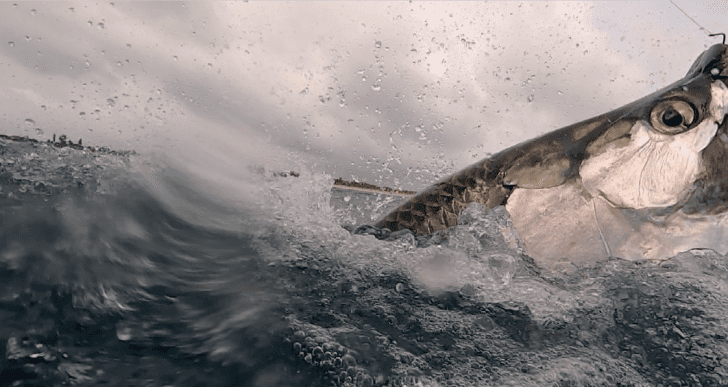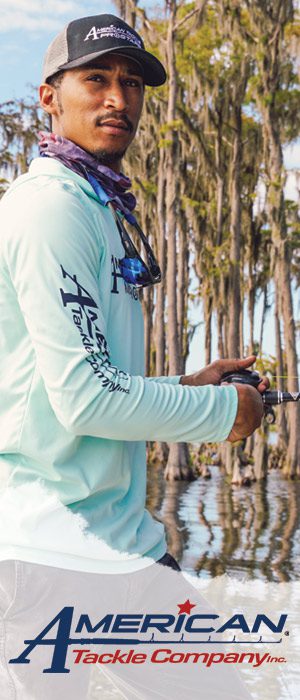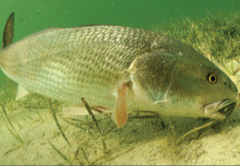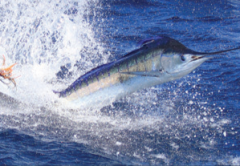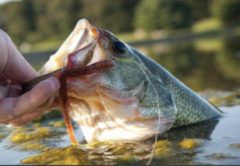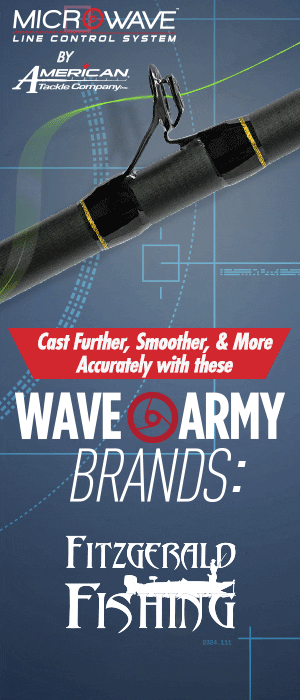Tarpon Time
Cash-in on Nature Coast Silver
By Capt, Rick Burns
Our resident year-round home boys, being the trout and reds, will still be obliging anglers in June as they did in May. Many guides had several trips during late May getting limits of spotted sea trout. In as little as 3 feet of water, it’s best to utilize a jig under a Cajun Thunder cork. Don’t use any jighead heavier than 1/8 oz in this shallow of water. You still need a little weight for casting, but you don’t want to anchor the boat. The bait needs to flutter down and rest between pops. The ole trusty white, new penny and electric chicken assassins will be the best colors for plastics. If the floating grass is too much and gets snagged on a topwater plug, but isn’t thick, try a Mirrorlure Mirrodine subsurface twitch bait. Color isn’t as important as the action and flash these plugs put out. Spanish mackerel will still be around and eager to take the same tackle. The cobia for June will be here in full force. And the bonnet heads and spinner sharks will take the similar offering as the trout.
However, the “reel deal” for our Homosassa and Crystal River area in June will be the kickoff of the peak season for the silver king, which will last through the month. Giant tarpons start to show up on the shallow 3’ to 7’ gin clear flats as early as late April if the water along the coast reaches about 75 degrees. Most of my charters during the peak June tarpon season will be with the fly rod. Not necessarily because it’s the most successful tackle of choice, but because it’s the epitome of sportfishing. There’s nothing like seeing, casting and fooling a 150-to- 200-pound fish into taking a clump of chicken feathers tied on a hook. We use a lot of toads, apte 1 and 2’s, black deaths, Homosassa specials, and cockroach patterns to achieve most of the hookups.
If the long rod isn’t your game, we’ll throw the spinning rod setup. A good Penn 6500 or 7500 on a matched slammer rod, along with a frisky pinfish, or active crab will most assuredly do the trick. During June I’m offering trips that consist of half trip tarpon, half trip redfish. I’ve found that if you’re going to stick a tarpon, it’ll be between 6:00 and 10:00 a.m. After that, the sun gets high and bright, and they head off into deeper water for the most part. Then it’s time to go bust some redfish.
When you see multiple boats vying for a shot at the swimming schools of tarpon, please be respectful of others. Approach with the trolling motor. The fish are very sensitive to boat pressure, so it requires common sense and cooperation for the numerous anglers after them to succeed. First, avoid running your outboard where the fish are, as much as possible. Run well outside the travel route, then cut in at a 90-degree angle, rather than roaring directly up on the flat. And if another boat is setup on a pod of fish waiting for them to swim into range, take your position well beyond that boat, rather than trying to cut the fish off. Wait your turn and you’ll get your shots; push too hard and you’ll blow the fish off—and make enemies of other anglers who do it right. The sure bet is to hire a guide and avoid the guess work in these sacred grounds. If interested, give me a holler, and we will go cash in on some Nature Coast Silver. www.homosassafishingguide.com, (352) 201-6111

